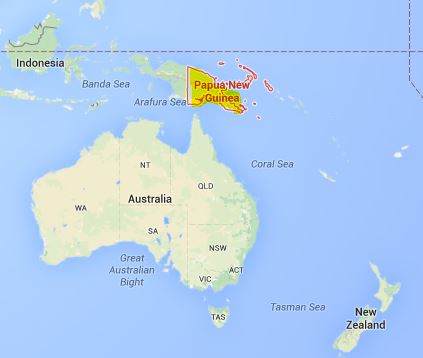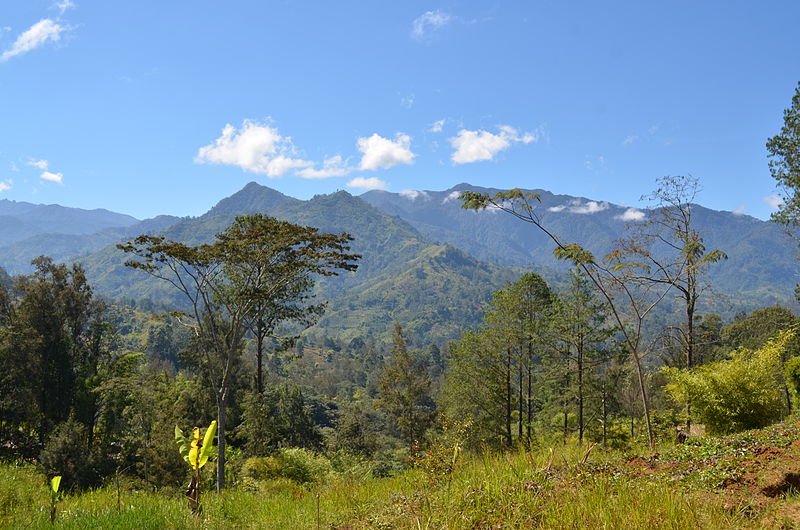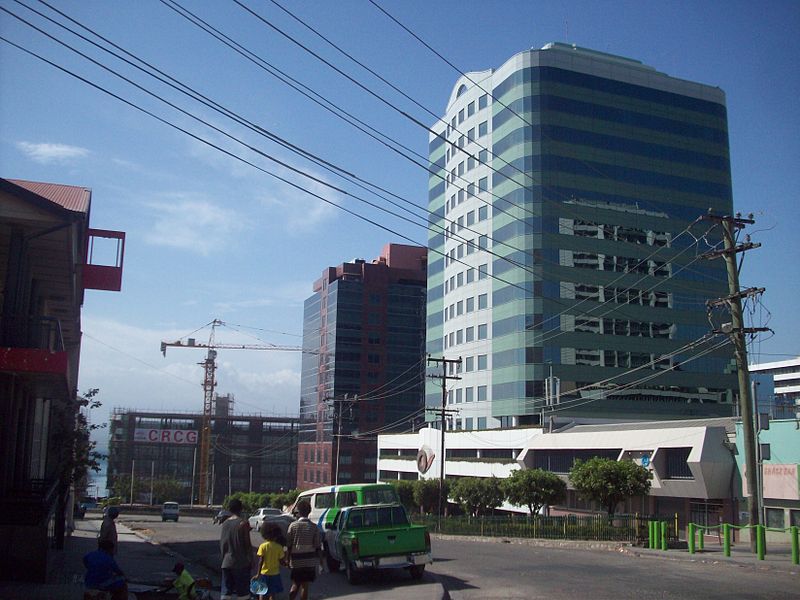Papua New Guinea---History, Geography and Geology


Papua New Guinea is located near Indonesia and Australia. It is closer to the equator. It has an area of 473189 sq.km. The capital city is Port Moresby. Papua New Guinea is located closer to the ring of fire. Active volcanoes and volcanic activities are found in this region. Earthquake is frequently felt in this region. Cyclones and storms affect this region every year. The eastern half of New Guinea Island and more than 600 islands form the territory of Papua New Guinea. The northern part of the New Guinea Island was occupied by a German Trading Company. The territory was known as German New Guinea. The southern part was known as Papua and occupied by British Trading Company. The western part of the New Guinea Island was occupied by the Dutch traders. The western part of the island became part of Indonesia. During world war--II, the Japanese troops occupied the whole island of New Guinea. But the British, American and Australian troops defeated the Japanese troops. The island of New Guinea was recovered from the Japanese occupation. The western part of the island was taken over by the Dutch administration. But the Dutch territories were combined to form the republic of Indonesia. The eastern part of the island was kept under the administration of Australia. The territory was called Papua New Guinea. The country became independent from the Australian administration on 16th September 1975. Australia remained the largest donor and became a strategic partner.
Papua New Guinea is a democratic country. Parliament is the supreme governing body of the country. Prime minister is the head of the government. The parliament has 111 members. The governors of 21 provinces and the National Capital District are members of the parliament. The remaining members are elected by the people. The tenure of the Parliament is 5 years. The head of the state is the queen of United Kingdom. She is represented by the Governor General. The Governor General is elected by the Parliament. Papua New Guinea is divided into 21 provinces and one National Capital District. The Governor is the head of the province. He is elected by the provincial council members. The provinces are divided into administrative districts for smooth administration. The name of the provinces are Central, Chimbu, Eastern Highlands, East New Britain, East Sepik, Euga, Gulf, Madang, Manus, Mine Bay, Morobe, New Ireland, Oro Province, Bougain ville autonomous region, Southern Highlands, West New Britain, West Sepik, Hela, Jiwaka and the National Capital District..


Papua New Guinea is a member of the Commonwealth of Britain. It is also associated with OPEC, Pacific Island Forum and Melanesian Spearhead Group. it is granted special observer status with ASEAN. Papua New Guinea has diplomatic relation with Australia, New Zealand, USA, UK, Japan, China, India, Indonesia, Malaysia, South Korea, Belgium, Philippines, Fiji and Solomon islands. These countries are also trading partners of Papua New Guinea. Papua New Guinea is a developing country. It is rich with natural resources like minerals, oil, gas, water and forests. Papua New Guinea has population of 7059663 as per the census of 2011. The GDP is around 19.828 billion dollar as on 2013 Around 800 languages are spoken by the local people. English is the administrative language and mode of communication in offices, schools and airports. Three vibrant cities are the backbone of Papua New Guinea. These cities are Port Moresby, Lae and Mount Hagen. Three airports are there near these cities. Port Moresby has a port and international airport called Jakson International Airport. The road network is found to be under developed and missing in many places. Movement from one part of the country to other part is difficult and time taking. The health care facilities are limited to the cities and towns. The people suffer from malaria, yellow fever and cholera. International agencies are active in providing medical facilities to some extent. Education is given priority and thrust is given on primary and secondary education. Technical education and university education are available in cities. Papua New guinea University is established in Port Moresby and the University of Technology is established in Lae.